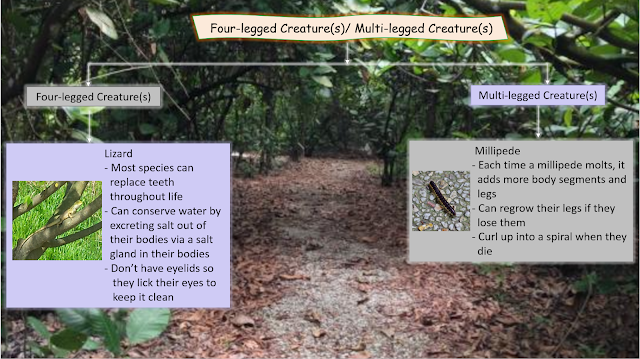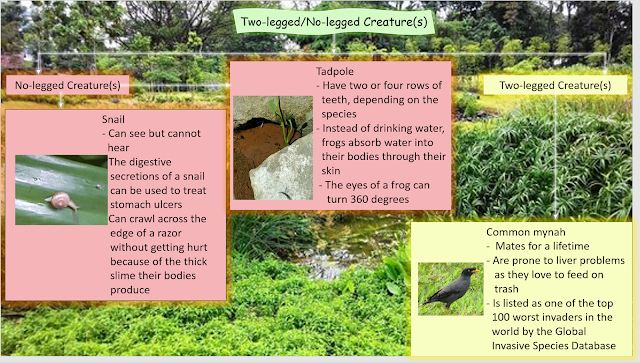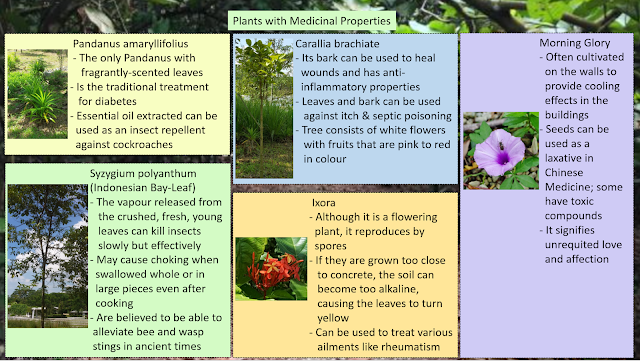1. Introduction of a possible Alternative energy
There are many forms of renewable sources of energy such as solar power, wind power, hydropower, nuclear energy and many more. These are resources that are abundant in supply and can be restored naturally, or are eco-friendly. One of the possible alternative energy can be solar power, which includes having solar panels installed to conserve energy.
Extracted from Google Images
2. These are the three ways that CleanTech Park has done on conserve energy that is applicable to enhance Jurong Lake Park.
1st Suggestion: Placed solar panels
Solar panels are dark coloured, heart absorbing semiconductor plates which are placed in places where the sunlight is abundant. The solar panels are placed near the corridors of Jurong CleanTech Park to absorb sunlight. The energy from the Sun will be transferred into the generator which converts the Sun's energy to electrical energy. The energy is then transferred throughout the building to allow the lights to function. It is energy saving as they get the energy from the Sun. Therefore, JLP can build some solar panels to absorb the Sun's energy and use it at night to light up the lamps.
2nd suggestion: Use of energy efficient facilities/tools
By using energy-efficient products or applications, we are actually using a lesser amount of energy to do the same amount of work. An example of energy saving products is the LED bulb and the Compact Flourscent bulb. Thus, if JLP can use these light bulbs instead of the normal light bulbs for these lamps , they can spend less money on electricity bills and conserve energy at the same time. The LED light bulb can last for a longer lifespan.
3rd suggestion: Having motion detector in toilets
Having motion detector in toilets uses a lesser consumption of energy usage. When there is no one present in the toilet, the motion detector will not turn on its lights and vice versa. When the person leaves the toilet, the energy changes and then the light will be switched off. Thus, lesser money can be spent on bills and is energy efficient at the same time.

Extracted from Google Images
Part B: Designs of park lamps for maximizing visibility
JEG have made used of LED lights to be installed in the lamps. We can apply this to JLP as the bulbs that they used in the lamps are not energy-efficient. By installing LED light bulbs in the lamps, there are advantages. It has a longer lifespan compared to other normal light bulbs. Besides that, it is energy-efficient. LED light bulbs consumes up to 90% less power than incandescent light bulb. It conserves energy and maximize the visibility at night.

Picture taken at JLP Extracted from Google Images (Ray Diagram for LED light bulb)
Part C: Credits and Acknowledgement
Part A: Wan Leng and Paul
Part B: Wan Leng
Pictures: Arunthathi
Edited by: Zhao Long
Having motion detector in toilets uses a lesser consumption of energy usage. When there is no one present in the toilet, the motion detector will not turn on its lights and vice versa. When the person leaves the toilet, the energy changes and then the light will be switched off. Thus, lesser money can be spent on bills and is energy efficient at the same time.

Extracted from Google Images
Part B: Designs of park lamps for maximizing visibility
JEG have made used of LED lights to be installed in the lamps. We can apply this to JLP as the bulbs that they used in the lamps are not energy-efficient. By installing LED light bulbs in the lamps, there are advantages. It has a longer lifespan compared to other normal light bulbs. Besides that, it is energy-efficient. LED light bulbs consumes up to 90% less power than incandescent light bulb. It conserves energy and maximize the visibility at night.

Picture taken at JLP Extracted from Google Images (Ray Diagram for LED light bulb)
Part C: Credits and Acknowledgement
Part A: Wan Leng and Paul
Part B: Wan Leng
Pictures: Arunthathi
Edited by: Zhao Long










